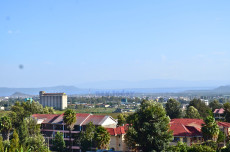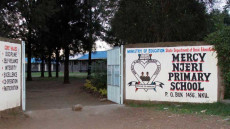- Other counties in the Coastal region affected by the ongoing floods include Kwale, Mombasa, Kilifi, and Lamu.
The Ministry of Health has warned about cholera and diarrhoea outbreaks with the ongoing rains.
In a statement on Friday, May 3, 2024, the ministry stated that the ongoing rains had led to a confirmed case of Cholera in Tana River County on April 26, 2024, and suspected diarrhoea cases in Marsabit.
“The ongoing heavy rains and flooding have led to a confirmed case of cholera reported on April 26 in Tana River County. This single case is significant, as it amounts to an outbreak,” the statement said.
As of May 5, 2024, the cholera cases had risen to 35.
Read More
Other counties in the Coastal region affected by the ongoing floods include Kwale, Mombasa, Kilifi, and Lamu.
In the past week, the coastal region had been warned of a possible Hidaya Cyclone that would likely hit the areas.
However, the Kenya Meteorological Department has confirmed that the Hidaya Cyclone has completely lost its strength after making landfall in Tanzania.
As per the Director of Meteorological Services, David Gikungu, despite the cyclone's weakening, rains accompanied by strong winds are still expected in the Kenyan coastal regions.
Public Health Principal Secretary Mary Muthoni emphasised the severity of the Cholera situation, saying that if measures are taken, the outbreak can be curbed.
She also insisted that early detection and prompt medical attention can make a significant difference, potentially saving lives.
The ministry has identified several risk factors contributing to the spread of this deadly disease, including the destruction of sanitation facilities during prolonged rains, which lead to the filling up and collapse of pit latrines, together with burst sewer lines and their flooding with contaminating effects.
So far, the ministry is collaborating with multi-agency teams in all affected areas to control the spread of cholera and other waterborne diseases.
Continuous advisories, providing cholera contingency supplies to assist in patient management, and distributing water, sanitation, and hygiene supplies to purify water sources are among the measures being implemented. The ministry is also pushing for household water treatment in high-risk areas and rescue camps.
Some of the symptoms associated with cholera include profuse watery diarrhoea, sometimes described as ‘rice-water stools,’ vomiting, thirst, leg cramps, and restlessness or irritability.
In case of the symptoms above, Kenyans are advised to contact the National Public Health Emergency Operation Centre at 0729 47 14 14, 0732 35 35 35, or 719.










